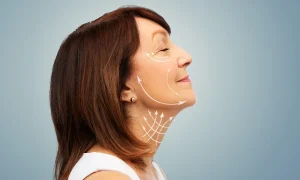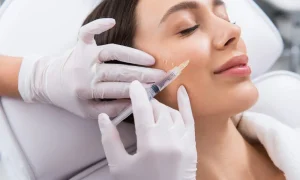Age-related macular degeneration (AMD) is a leading cause of vision loss in people over 50. With advancements in medical science, several AMD disease treatments are available, each with its benefits and limitations. This article examines the different treatments for AMD and helps you understand which option might be best for you.
What is AMD?
AMD affects the macula, the part of the retina responsible for central vision. There are two main types:
- Dry AMD: The more common form, characterized by the thinning of the macula.
- Wet AMD: A less common but more severe form, involving abnormal blood vessels growing under the retina.
Understanding the type and stage of AMD is crucial for determining the appropriate treatment.
Symptoms of AMD
Early detection is vital for effective management. Common symptoms include:
- Blurred or distorted central vision.
- Difficulty recognizing faces.
- A gradual increase in the need for brighter light when reading or doing close work.
If you notice any of these symptoms, consult an eye specialist promptly.
Treatment Options for AMD
Anti-VEGF Injections
How They Work
Anti-VEGF (vascular endothelial growth factor) injections are commonly used for wet AMD. These injections help reduce the growth of abnormal blood vessels and leakage.
Benefits and Limitations
- Benefits: These injections can significantly slow the progression of wet AMD and even improve vision in some cases.
- Limitations: Regular injections (every 4 weeks to 6 months – depending on type of anti VEGF) are required, which can be a burden for some patients.
Who Should Consider This Option
Anti-VEGF injections are best for patients with wet AMD who can adhere to a regular treatment schedule. Discuss with your doctor if this is suitable for your lifestyle and condition.
Laser Therapy
Types of Laser Therapy
- Photodynamic Therapy (PDT): Combines a light-activated drug with a low-power laser to target and destroy abnormal blood vessels. However, with the advent of anti VEGF, this is rarely used now.
Benefits and Limitations
- Benefits: PDT can be effective in sealing off leaking blood vessels and preventing further damage.
- Limitations: It may cause scarring and can be less effective than anti-VEGF injections. It’s typically used when injections are not suitable or effective.
Who Should Consider This Option
PDT is suitable for patients with specific forms of wet AMD. It’s particularly useful if anti-VEGF injections are not an option due to allergies or other medical conditions.
Nutritional Supplements
The Role of Supplements
For dry AMD, certain nutritional supplements can slow the progression of the disease. The AREDS (Age-Related Eye Disease Study) formula includes vitamins C and E, zinc, copper, lutein, and zeaxanthin.
Benefits and Limitations
- Benefits: Supplements can help reduce the risk of progression from intermediate to advanced AMD.
- Limitations: They cannot cure AMD or restore lost vision, and they are less effective for wet AMD.
Who Should Consider This Option
Nutritional supplements are recommended for patients with intermediate dry AMD or those at high risk of developing advanced AMD. Consult your doctor before starting any supplement regimen.
Surgery
Types of Surgical Interventions
- Retinal Translocation: Involves repositioning the retina to avoid abnormal blood vessels.
- Implantable Miniature Telescope: A device implanted in the eye to improve vision for patients with advanced AMD.
Benefits and Limitations
- Benefits: Surgical options can offer significant improvements in vision for advanced cases.
- Limitations: Surgery carries risks, including infection and complications. It’s usually considered when other treatments have failed.
Who Should Consider This Option
Surgical treatments are typically reserved for patients with advanced AMD who have not responded to other treatments. Thorough discussion with an eye surgeon is necessary to weigh the benefits and risks.
Emerging Treatments
Gene Therapy
Gene therapy is an exciting area of research for AMD. It involves modifying or replacing defective genes to halt or reverse the disease process.
Benefits and Limitations
- Benefits: Potential for long-term or permanent treatment.
- Limitations: Still in experimental stages and not widely available.
Who Should Consider This Option
Gene therapy may become an option in the future for patients with genetic forms of AMD. Currently, it’s mainly available through clinical trials.
Stem Cell Therapy
Stem cell therapy aims to regenerate damaged retinal cells and restore vision.
Benefits and Limitations
- Benefits: Promising results in early studies.
- Limitations: Experimental and not yet widely accessible.
Who Should Consider This Option
Like gene therapy, stem cell therapy may be an option for the future. Patients interested in cutting-edge treatments should explore clinical trials.
Conclusion
Choosing the right AMD disease treatment depends on the type and stage of your AMD, as well as your overall health and lifestyle. Anti-VEGF injections, laser therapy, nutritional supplements, and surgical options all have their roles in managing this condition.
Emerging treatments like gene and stem cell therapy offer hope for the future. Consult with your eye specialist to determine the best treatment plan for your needs, ensuring that you manage AMD effectively and maintain the best possible quality of life.






More Stories
Enhance Your Culinary Experience: Pairing Cannabis Strains with Local Flavors
How to Choose the Right Cheek Filler and Factors to Consider?
How can you use 11oysters candy to create a romantic moment?